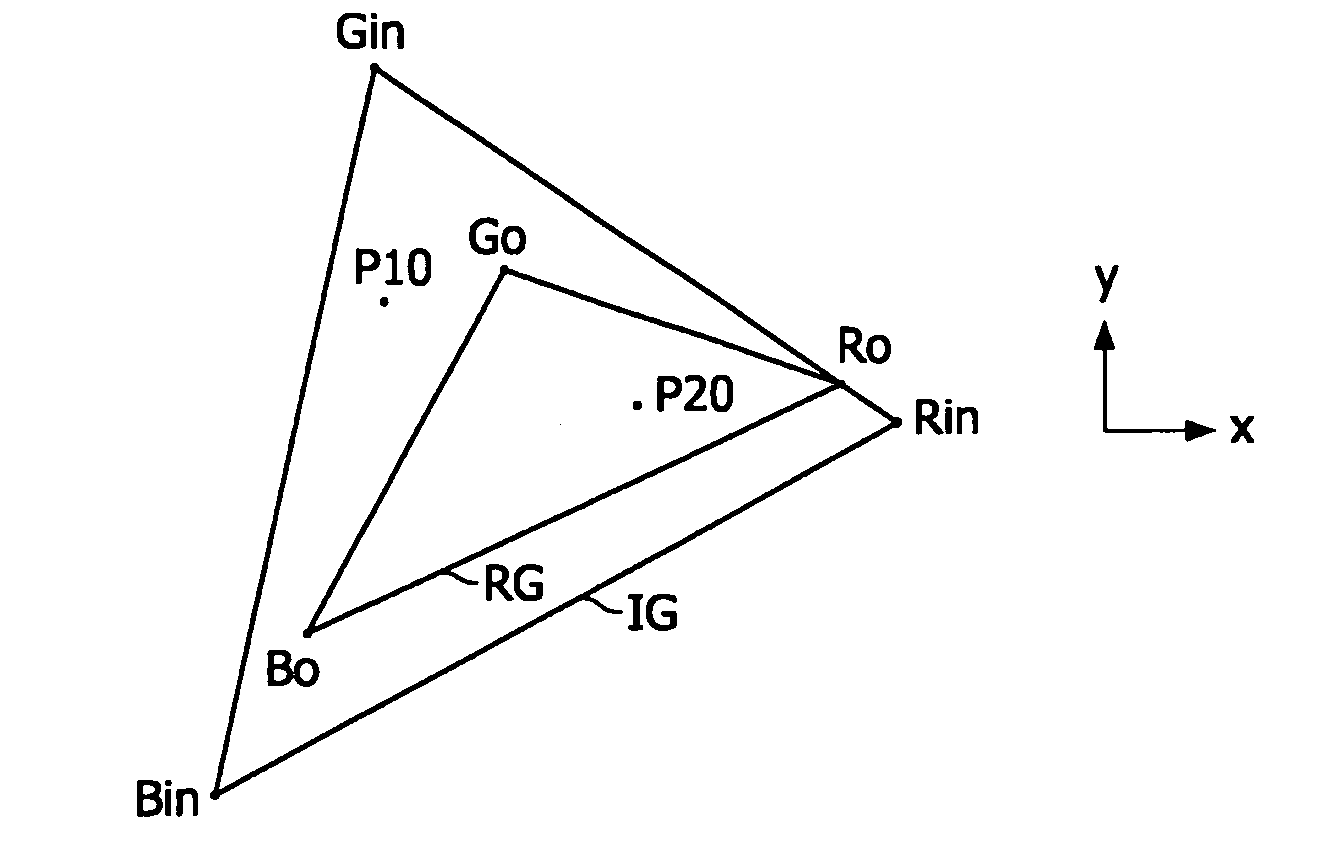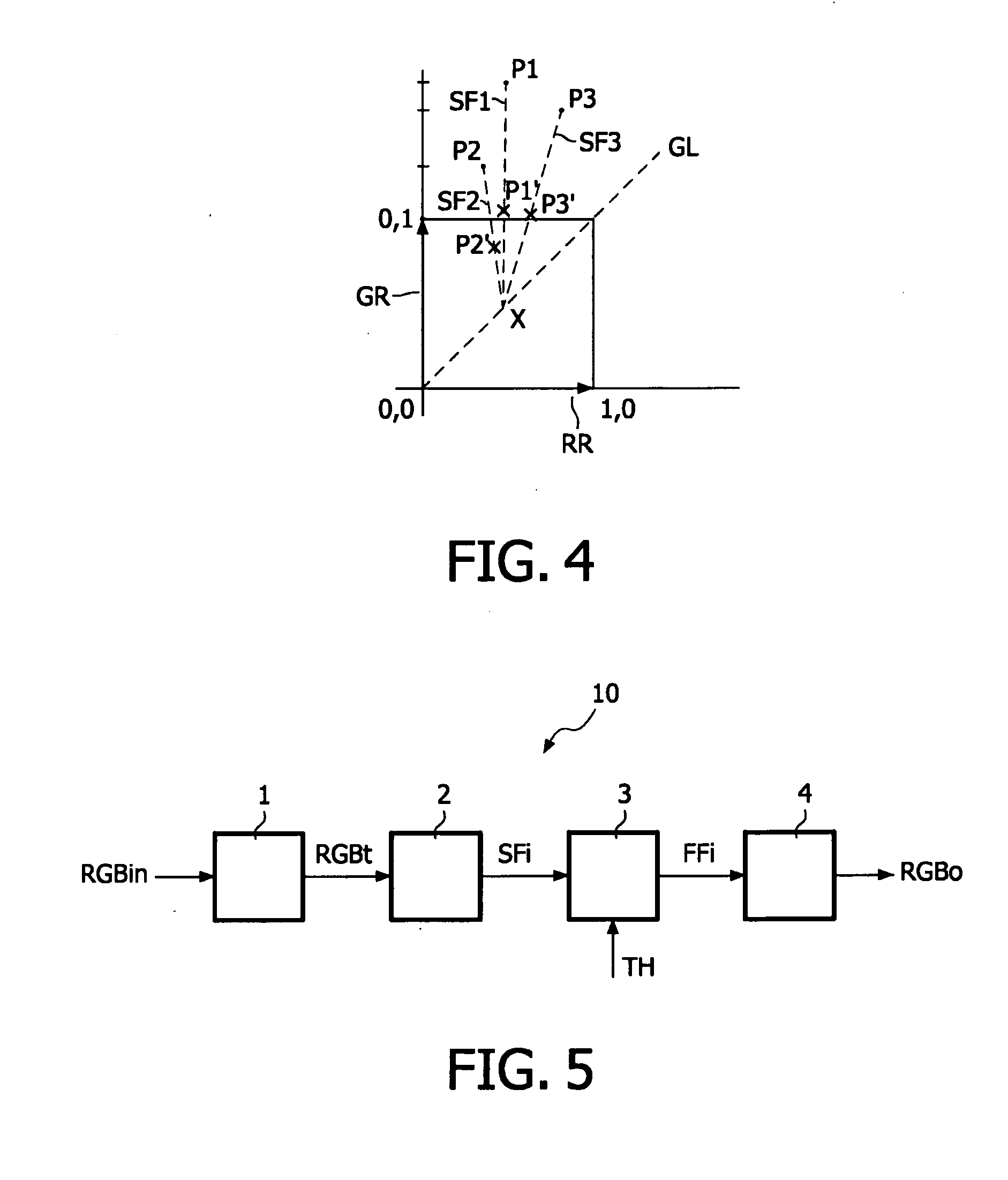Image gamut mapping
a gamut mapping and image technology, applied in the field of gamut mapping, can solve the problem that inside gamut pixels with out-of-gamut neighbors will not be mapped inwards, and achieve the effect of minimizing the human visual response to luminance and chrominance changes, and preserving the details of the imag
- Summary
- Abstract
- Description
- Claims
- Application Information
AI Technical Summary
Benefits of technology
Problems solved by technology
Method used
Image
Examples
Embodiment Construction
[0032]FIG. 1 shows an example of an input gamut and an output gamut and their RGB primaries in a CIE xy chromaticity diagram. The input gamut IG is defined by the input primaries Rin, Gin, Bin which form the vertices of the input gamut triangle. The reproduction gamut RG is defined by the reproduction RGB primaries Ro, Go, Bo which form the vertices of the reproduction gamut triangle. The input gamut triangle embraces the reproduction gamut triangle. By way of example, two input pixels P10 and P20 are shown. The input pixel P20 already lies within the reproduction gamut RG and thus need not be corrected. The input pixel P10 lies outside the reproduction gamut RG and thus cannot be faithfully reproduced. The present invention is related to how such an input pixel P10 which lies outside the reproduction gamut RG has to be scaled into the reproduction gamut RG with minimal loss of details.
[0033]FIG. 2 shows an example of a prior art gamut mapping of input pixels in a reproduction RG su...
PUM
 Login to View More
Login to View More Abstract
Description
Claims
Application Information
 Login to View More
Login to View More - R&D
- Intellectual Property
- Life Sciences
- Materials
- Tech Scout
- Unparalleled Data Quality
- Higher Quality Content
- 60% Fewer Hallucinations
Browse by: Latest US Patents, China's latest patents, Technical Efficacy Thesaurus, Application Domain, Technology Topic, Popular Technical Reports.
© 2025 PatSnap. All rights reserved.Legal|Privacy policy|Modern Slavery Act Transparency Statement|Sitemap|About US| Contact US: help@patsnap.com



